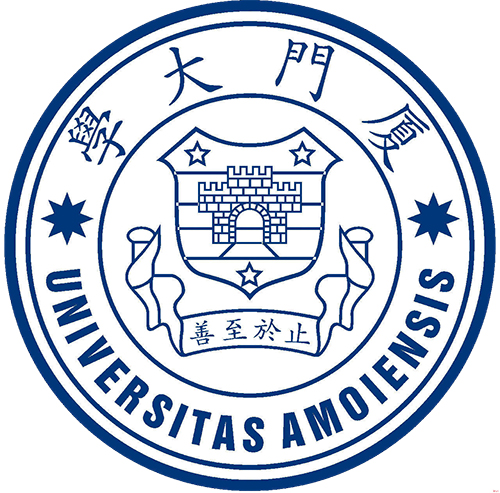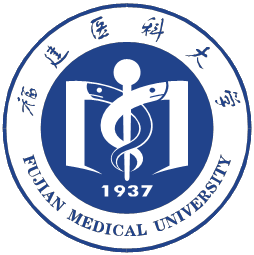
 Introduction
IntroductionEveryone that has been to Xiamen can’t help but marvel at the city’s beauty. Everyone that has studied at Xiamen University remembers this unforgettable experience.
Xiamen University was founded in 1921 by Tan Kah Kee, the well-known patriotic overseas Chinese leader. The English-Medium Economics enjoys prominent reputation for XMU in China. Besides, XMU has over 1000 international students and students from Kong, Macao and Taiwan has passed 600. You will marvel at what you’ve experienced there.
 About the Program
About the ProgramProgram Description
The programme aims to help international students to become qualified for medical professionals through 6-year training in medical school and hospitals. XMU launched the MBBS programme in 2006 and the number of graduates who have passed the Indian Medical License Examination comes first among comparable Chinese universities. Medical College Xiamen University conducted the MBBS program in 2006, nearly 30% of the first batch of international students passed the screening test held by the medical council of their motherland at the first attempt.Main CoursesAnatomy, Biochemistry, Physiology, Pharmacology, Microbiology, Pathology, Pathophysiology, Internal Medicine, Surgery, Obstetrics and gynecology, Pediatrics, ENT, Dermatology, Neurology, Emergency medicine, Forensic medicine, Radiology etc.Fee StructureMedical Insurance: 260RMB for half a year; 520RMB per year Tuition Fee for English-taught undergraduate program: 26,000RMB/ year Living cost: about 800-1,000RMB/ month Off-campus Accommodation: about 1,500RMB/ month Registration Fee: 150USD Books Fee: about 400-700 RMB/ year In total: about 54,920-57,620 RMB/year Note: Fees are not refundable after you check in and register.InternshipThe internship will be arranged in the last year and the duration is one year (at least 48 weeks).ScholarshipXiamen University will provide Xiamen University Scholarship for New International Students (Only Tuition Fee Covered) and CSC Government Scholarship Program (Full Scholarship) for qualified international students.Internship and CareerThe internship will be arranged in the last year and the duration is one year (at least 48 weeks). Medical College of Xiamen University consists of teaching organizations - basic medical department, clinical medical department, preventive medical department, Chinese medical department, pharmaceutical department and nursing department; scientific research organizations of biomedical engineering research center, anticancer research center, basic medical experimental and teaching center, Chinese Medicine research center of Xiamen University etc; five grade three plus affiliated hospitals, including Affiliated Sun Yat-sen Hospital, Affiliated Southeast Hospital, Affiliated Xiamen Ophthalmic Hospital etc; five teaching hospitals, including Xiamen 1st Hospital, Xiamen 2nd Hospital, Xiamen Chinese Medical Hospital, Xiamen Xianyue Hospital and Xiamen Maternity and Child Health Hospital; four teaching bases, including Xiamen Disease Prevention and Control Center, Xiamen Hygiene Supervision Institute, Xiamen Drug Examination Institute and Xiamen Starshark Drug Company.Degree AwardedOn completing the requirements of the teaching program and passing the graduation examinations successfully, international medical undergraduates will be granted a graduation certificate and conferred a medical degree by Xiamen University, if they meet the degree regulations of Xiamen University. The English copy of the degree will state MBBS (Bachelor of Medicine and Bachelor of Surgery).
 About Xiamen University
About Xiamen University
MR. TAN KAH KEE (1874-1961)
An overseas Chinese legend, Mr Tan Kah Kee's legacies have inspired many in Southeast Asia, by Comrade Mao Zedong as the "Flag of the Overseas Chinese and Glory of the Nation." From humble immigrant origins, he rose to a prominence, which few can match. Best remembered as an eminent entrepreneur, social reformer, political activist, philanthropist, community leader, and educationist, he died at the age of 87 in Beijing on August 12 1961 and was accorded a national funeral by the Chinese Government for his contribution to the society.
The Legend
Born on October 21 1874 in Fujian, China, Mr Tan arrived in Singapore to join his father, Mr Tan Kee Peck, in the family's rice business in 1890. He was only 17. Business responsibilities came early as his father's business failed in 1904, leaving him much on his own. With extraordinary fortitude and risk-taking abilities, he set about establishing a business of his own which began in pineapple canning and later, rice milling. He eventually found the mainstay of this fortune in rubber plantation. The switch from rubber plantation to rubber manufacturing was a bold move, and it made him one of the most successful Chinese overseas businessmen in the whole of Southeast Asia. Profits made during the World War I expanded his horizons.
By the 1920s, he came to preside over a huge business empire, which extended into most East and Southeast Asian cities, employing over 10,000 people. It spanned areas as diverse as rubber plantation and manufacturing, shipping, import and export brokerage, real estate and rice trading. As one of the earliest industrial pioneers in the region, Mr Tan Kah Kee earned himself the accolade "Henry Ford of Malaya".
The Philanthropist
Mr Tan's business success put him in the forefront of the leadership of the Hokkien community. He held advanced views about social reform and criticised several outmoded practices then prevalent, like gambling, opium-smoking and ritual extravagance. As a result of his initiative in 1927, the Singapore Hokkien Huay Kuan was reformed and democratised. His social concerns, however, were not confined to the Hokkiens but extended to the larger Chinese community in Singapore. This was demonstrated in his efforts to reform the Singapore Chinese Chamber of Commerce. In 1929, he established a Chinese Associate to enable different linguistic and regional groups to rise above sectarian interests and serve the larger community along progressive and democratic lines.
As Mr Tan Kah Kee's life in China and Southeast Asia encompassed a vast and exciting era of revolutionary change and rapid social and economic transformation, he could not keep himself aloof from the ebb and flow of political currents of his times. He kept a close interest in political developments in China in general and Fujian in particular. In 1928, he raised $1.34 million for the Shandong Relief Fund, following the Jinan Incident in May 1928 between the Japanese forces and the Kuomintang army. In 1937, when the Sino-Japanese war broke out, Mr Tan found himself heading the Singapore China Relief Fund (1937-46) and the Southseas China Relief Fund Union (1938-49).
The Educationist
An abiding interest that underpinned Mr Tan Kah Kee's multi-faceted public activities sprang from his firm commitment to educational philanthropy. In 1894, at the age of 21, he established a school in his village in Jimei. In the following decades, his enthusiasm and passion for educational philanthropy grew, culminating in his endowment of the Xiamen University in 1921. The founding of this University enhanced his reputation nationally and internationally.
In Singapore, Mr Tan's educational endeavours were impressive. Through his inspiration, five primary and secondary Chinese schools were founded, chief among them being the Chinese High School. He also donated generously to schools which imparted English education. For instance, he donated $30,000 to the Anglo-Chinese School in 1919.
Teacher education occupied a special place in Mr Tan's vision of educational philanthropy. He generously supported teacher education in China and Singapore. In 1918, he established a normal school to train teachers in Fujian. When he founded Xiamen University, he ensured that education enjoyed the status of a full-fledged faculty in its structure. In Singapore, he campaigned from 1930 onwards for the establishment of a Nanyang Chinese Normal School to train qualified teachers for Chinese schools. This school was eventually established in 1941.
In addition to being a successful entrepreneur and supporter of education, Mr Tan was deeply interested in historical scholarship. Well-versed in Chinese historiography from the classical to the modern period, he enjoyed drawing anecdotes and quotations from Chinese history in his speeches and writings. This love for historical scholarship is amply reflected in his own memoirs, Nanqiao Huiyilu, which has been described as "undoubtedly one of the best documented autobiographies ever written by an immigrant Chinese in Southeast Asia".
 Accommodation
Accommodation
* Siming Campus:
* Off- Siming campus accommodation:
* Xiang’an Campus:
The student apartments are equipped with a comprehensive range of amenities, with all rooms containing a private bathroom, a telephone, an air conditioner, Internet access points, a water heater, a safe, etc.
Undergraduates live in four-person rooms with an accommodation fee of RMB 1,200 per person per year.
Undergraduates of the Overseas Education College live in double rooms with the accommodation fee of RMB 2,000 per person per year.
Undergraduates of MBBS live in double rooms with the accommodation fee of RMB 1,600 per person per year(water and electricity costs not included)
Living expenses: Around RMB 750 per month.
 Fees
Fees Admissions Process
Admissions Process  Entry Requirements
Entry Requirements1. Applicants must be non-Chinese citizens aged between 18 and 30 by September 1st, 2025, be mentally and physically healthy, and possess a valid regular passport. Applicants under the age of 18 should submit Guarantee Statement
2.High school graduate with good performance.
3.For students from non-English speaking countries, New TOEFL should be above 80 and IELTS should be above 6.0; for students whose high school classes were taught in English, you need to provide a English teaching proof; there is no requirements for students from English-speaking countries.
 Application Materials
Application Materials1.Health certificate
Required during application.Photocopy of notarized foreigner physical examination record (for durations of study over 6 months)
2.Photocopy of valid passport
With name, passport number & expiration date, and photo included
3.High school academic transcript
4.High school graduate certificate
Graduation certificate in languages other than Chinese or English should be translated into Chinese or English and be certified by notarization.
5.English proficiency test certificate
For example, IELTS or TOEFL, only for applicant whose native language is not English.
6.Letter of recommendation
From professor or associate professor or equivalents
7.Financial support statement
Photocopy of the financial support statement with signature
 Reviews
Reviews Scholarship
Scholarship
Tuition
Start Date